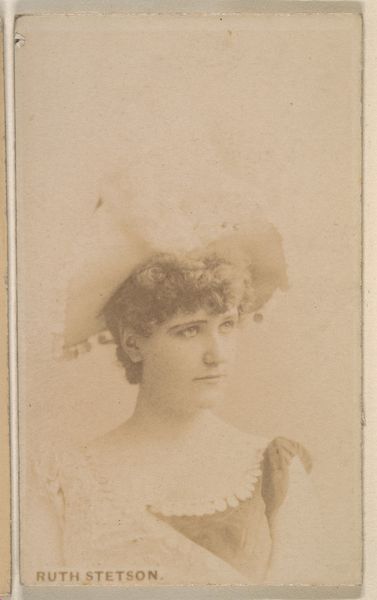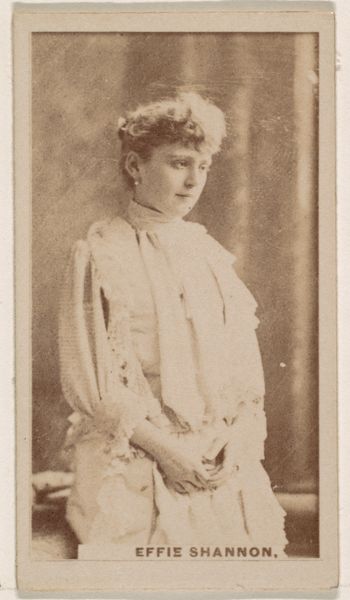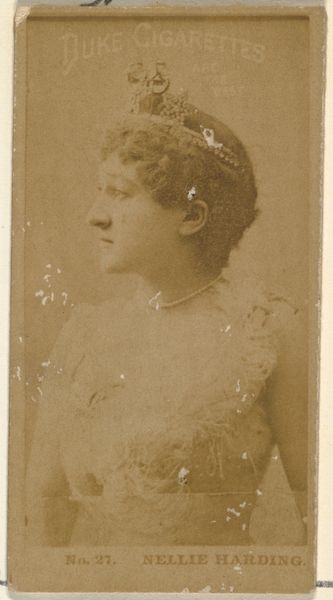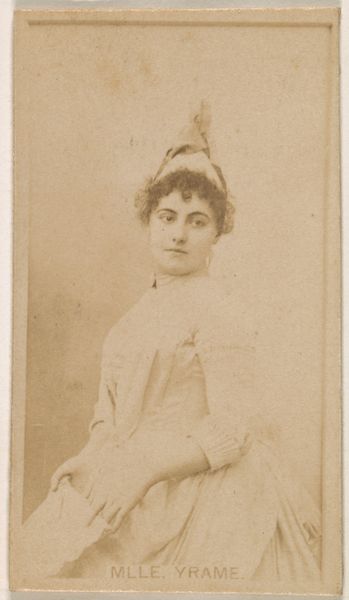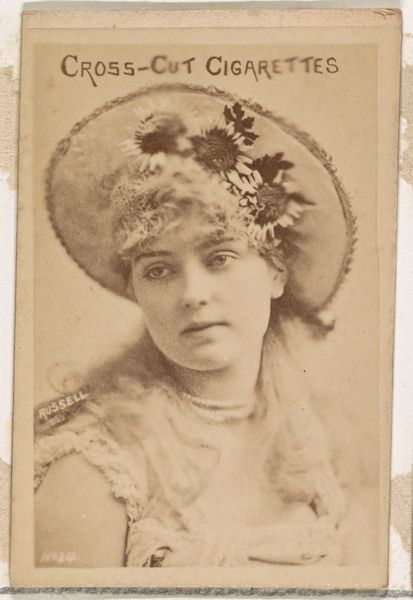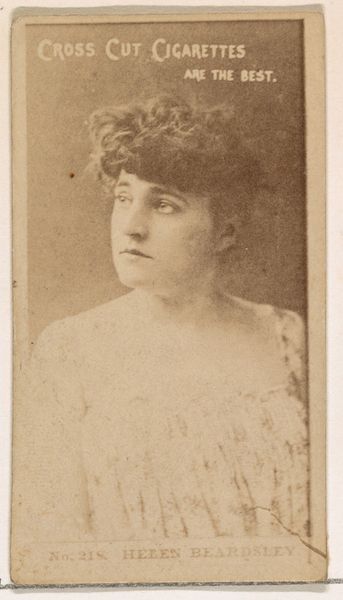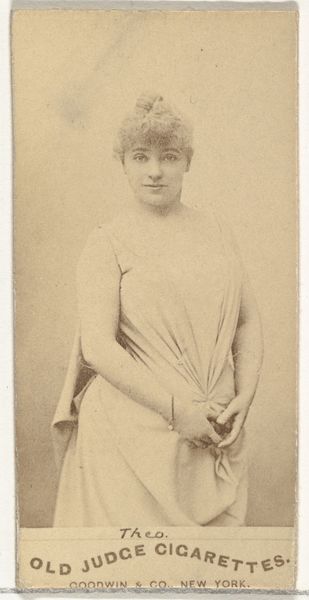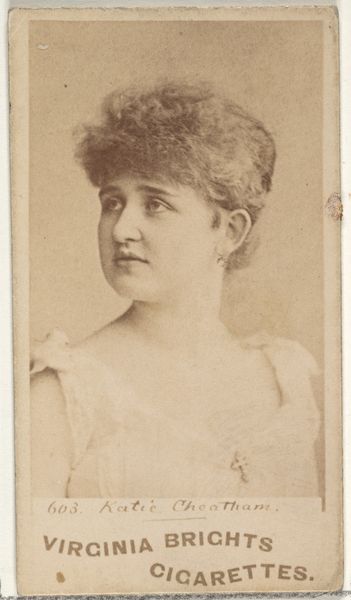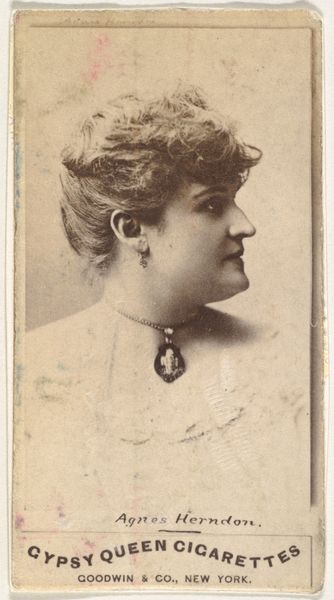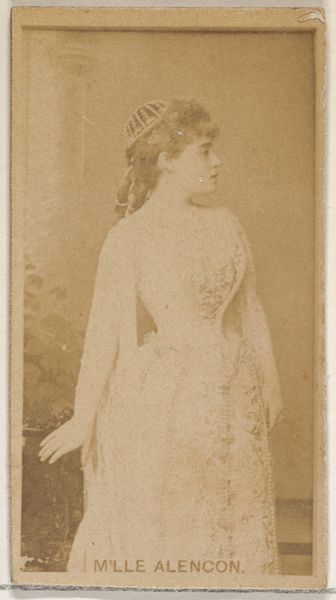
Card Number 1, from the Actors and Actresses series (N145-1) issued by Duke Sons & Co. to promote Cross Cut Cigarettes 1880s
0:00
0:00
drawing, print, photography
#
portrait
#
drawing
# print
#
photography
#
19th century
Dimensions: Sheet: 2 1/2 × 1 3/8 in. (6.4 × 3.5 cm)
Copyright: Public Domain
Curator: This is "Card Number 1" from the Actors and Actresses series. It was produced in the 1880s by W. Duke, Sons & Co. to promote Cross Cut Cigarettes. The medium combines photography and drawing in a print. Editor: It's remarkably soft. The sepia tones and diffused light lend a romantic, almost ethereal quality. She seems to gaze into the future, or maybe a painful past? Curator: Right. These cards were essentially marketing tools, inserted into cigarette packs to encourage repeat purchases. But they also served as a fascinating form of proto-celebrity culture, presenting idealized images of beauty and success, specifically the images of stage actors and actresses. This connects deeply with consumerism of the Gilded Age. Editor: So, was this idealized image used to perpetuate a patriarchal society that held these actresses hostage to societal and industrial expectation? Is she really free? That is a rather somber thought! It's a tension embodied, actually, in that dark ribbon choker around her neck. The portrait speaks of refinement and constraint, both literally and symbolically, mirroring the expectations of women within the burgeoning entertainment industry and social milieu of the era. Curator: Exactly. That choke is almost ominous; a constraint that belies the performative aspect of these actress cards. As commercial objects they had symbolic meanings that would likely escape viewers today. This is Number One in the series, almost functioning as the origin or archetype of female performance. There is an echo of something in Western thought. The idea of muse maybe? Editor: Right, the whole concept reeks of male gaze but it also creates the star! I also notice her gaze isn't direct; it's averted, almost melancholy. Is she complying? Defiant? Does her story represent resistance to late Victorian-era strictures or succumb to the dominant cultural narratives? She is, for me, speaking volumes across the ages. Curator: The interplay of these images and their cultural moment adds layers to our understanding of representation and identity. This is not only a marketing strategy but is representative of late 19th century cultural and commercial landscapes. Editor: Ultimately, the card serves as an entry point to consider power dynamics that shaped not just entertainment but the lives of women and minorities then—dynamics which continue to be debated, negotiated, and challenged now.
Comments
No comments
Be the first to comment and join the conversation on the ultimate creative platform.
